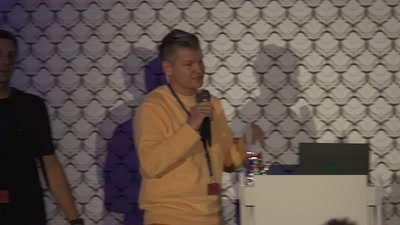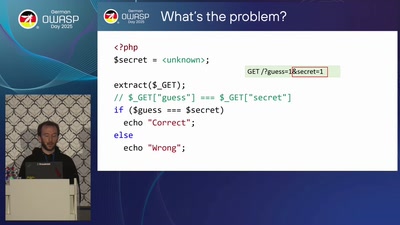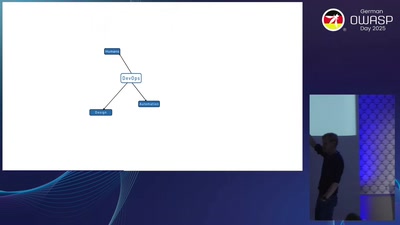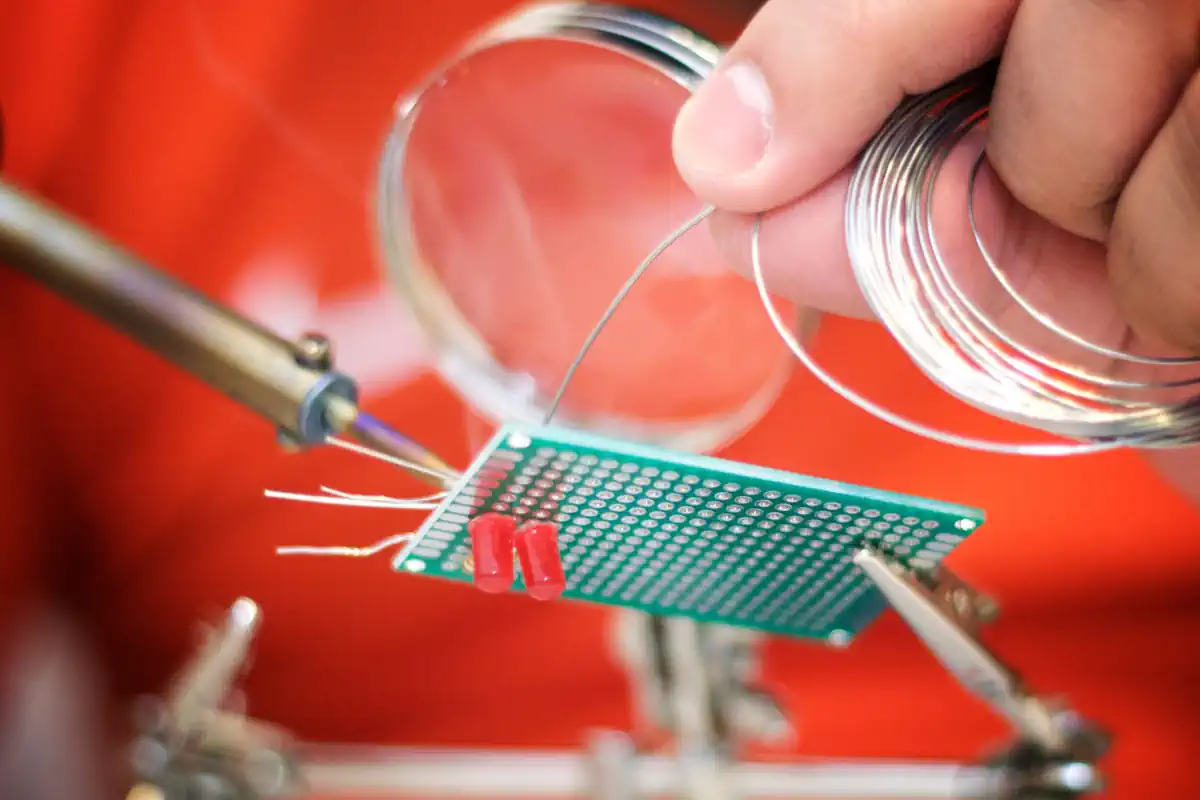Feed cleverhans-blog [copy] http://www.cleverhans.io/feed.xml has loading error: cURL error 22: The requested URL returned error: 404
Feed Security (b)log [copy] http://securityblogru.livejournal.com/data/rss has loading error: cURL error 22: The requested URL returned error: 403 Forbidden
Closing (god2025)

Licensed to the public under https://creativecommons.org/licenses/by-sa/4.0/
about this event: https://c3voc.de
Video:god2025-56496-eng-Closing_hd.mp4
Extract: A PHP Foot-Gun Case Study (god2025)

Do you always read the documentation before using a function in your languages' standard library? This talk explores the attack surface of a special feature in PHP which is easy to misuse with unforseen consequences. The `extract` function allows to replace the value of local variables named after the keys in an array. Calling it with user-controlled input allows the attacker to change arbitrary variables in the program. The documentation warns against the dangers of using it with untrusted data, but our large-scale analysis on 28.325 PHP projects from GitHub shows, that this warning...
OWASP Cumulus: Threat Modeling the Ops of DevOps (god2025)

In this presentation, we will highlight how threat modeling, as a proactive measure, can increase security in DevOps projects.
We will introduce OWASP Cumulus, a threat modeling card game designed for threat modeling the Ops part of DevOps processes. This game (in combination with similar games like Elevation of Privilege or OWASP Cornucopia) enables DevOps teams to take the security responsibility for their project in a lightweight and engaging way.
Licensed to the public under https://creativecommons.org/licenses/by-sa/4.0/
about this event: https://c3voc.de
Video:god2025-56482-eng-OWASP_Cumulus_Threat_Modeling_the_Ops_of_DevOps_hd.mp4
Einladung zum Junghacker:innentag auf dem 39C3

Hinweise für Mithelfende und Veranstalter am Ende des Textes!
Junghacker:innen-Tag - sei dabei!Zu unserer Freude haben sich in den letzten Jahren immer mehr Junghacker:innen auf dem Congress eingefunden. Daher bieten wir auch diesmal, wie schon in den Vorjahren, einen speziell auf Kinder und Jugendliche zugeschnittenen Junghacker:innentag an. Am zweiten Congresstag, dem 28. Dezember 2025, organisieren Freiwillige aus vielen Assemblies von etwa 10 bis 17 Uhr ein vielseitiges Workshop-Programm für angehende Hacker:innen.
Wer schon immer mal löten, programmieren, einen 3D-Drucker ausprobieren, einen mathematischen Beweis führen, selber ein Schloss ohne Schlüssel öffnen oder nerdige Spiele spielen wollte, sollte sich die Gelegenheit nicht entgehen lassen. Neben...
Музыкальный движок для Денди: FamiTone

Сегодня я решил поведать миру очередную историю одного из множества моих восьмибитных деяний дней давно минувших. Это одновременно обзор и своего рода «постмортем» довольно успешного проекта, правда, припозднившийся на добрых полтора десятка лет. Погреться в лучах славы былых успехов никогда не поздно!
Речь пойдёт о некогда созданной мной библиотечкe, музыкальном «драйвере» или движке под названием «FamiTone», предназначенном для озвучки любительских (homebrew) игр для 8-битной игровой приставки Famicom, она же NES, она же «Денди». По пути разберёмся, что это, как устроено, кому и зачем вообще могло понадобиться, и пригодилось ли в итоге. Спойлер: да.
Читать далееBugTraq.Ru: От повторного пришествия Шаи-Хулуда пострадало 25 с лишним тысяч разработчиков
Распространяющийся через npm-пакеты червь с романтическим именем Шаи-Хулуд, первое появление которого было зафиксировано еще в сентябре, вернулся с гораздо более впечатляющими последствиями. Червь представляет собой пост-инсталляционный скрипт, после запуска которого происходит поиск доступных токенов, облачных паролей, json-секретов и прочей критичной информации. Дальше червь переиздает все пакеты, принадлежащие жертве, прописывая в них себя. По самым скромным оценкам, в течение трех дней было заражено 25 тысяч репозитариев.
обсуждение | Telegram
39C3 – Creature ChroniCles Update
TL;DR
Was sich ändert in Kurzform: Die sehr eindeutige Resonanz auf die Ausnahme hat ergeben, dass das Projekt Creature ChroniCles nach altbekannter Foto-Policy geregelt sein wird. Es wird also vor jeder Aufnahme um das Einverständnis aller Beteiligten gebeten.
Creature ChroniCles reloadedIm Pre-Congress-Stress gehen leider manchmal Dinge und Details unter, die für einen selbst selbstverständlich scheinen, für andere aber alles andere als klar und eindeutig sind. Das ist uns beim Blog-Artikel zum Projekt „Creature ChroniCles“ passiert. Wir waren zu sehr in unserer Innensicht gefangen. Die meisten von uns kennen Stella gut, und aus dieser Perspektive sahen wir kein Problem mit ihrem Projekt. Wir haben dabei...
Одноразовые вейпы: как из-за общества потребления тысячи полезных компонентов отправляются в мусорку?

Концепция моего блога построена на том, чтобы давать новую жизнь устройствам прошлых лет. Чего мы с вами только не делали: и клиенты современных сервисов для смартфонов из 2010-х писали, и изучали их прошивки с последующей модификацией, и даже ремонтировали гаджеты со свалки, попутно разбираясь в их инженерных особенностях.
Сегодняшнему устройству едва исполнилось 3 месяца, а оно уже отправилось на свалку. И отправляются сотни таких каждый день. Сегодня мы с вами затронем очень важную тему - как из-за общества потребления тысячи устройств с очень мощными микроконтроллерами, цветными IPS-дисплеями и литиевыми аккумуляторами лишаются второго шанса на жизнь...
Читать далееCall for Interpreters: Translate 39C3!
Auf dem Weg zum Congress, unsicher, was du dort tun kannst, interessiert daran, deine beeindruckenden Sprachfähigkeiten einzusetzen? Wenn du mehrsprachig bist und flüssig Deutsch, Englisch und eventuell weitere Sprachen sprichst, dann würden wir dich gerne in unserem Dolmetsch-Team c3lingo begrüßen.
Wir dolmetschen ALLE Vorträge in den vier Sälen live. Deutsche Talks werden nach Englisch übersetzt und umgekehrt. Unsere Arbeit wird ins Internet gestreamt und als Audio-Stream direkt in den Sälen übertragen, und Aufzeichnungen werden auf media.ccc.de veröffentlicht. Wir haben einen weiteren Übersetzungskanal für mehr Sprachen, der auf dieselbe Weise verbreitet wird.
Es gibt also viel zu dolmetschen, und dafür brauchen wir DICH....
39C3: Call for Angels
Der 39C3 braucht dich! Ohne die vielen ehrenamtlich Helfenden, Engel genannt, wäre kein Congress möglich.
Egal, ob du zum ersten Mal dabei bist oder schon viele Cycles mitgemacht hast: Als Engel mitzuhelfen ist immer ein guter Weg, um neue Lebewesen kennenzulernen, einen Blick hinter die Kulissen zu werfen und unvergessliche Erfahrungen für dich und andere zu schaffen.
Wenn du mithelfen möchtest, registriere dich im Engelsystem. Nach deiner Ankunft auf dem Congress komme bitte zur Engelregistrierung am rechten Empfang in der Eingangshalle. Dort erhältst du dein Engel-Badge und kannst dich anschließend frei in Schichten für die anstehenden Aufgaben eintragen. Alternativ findest du den...